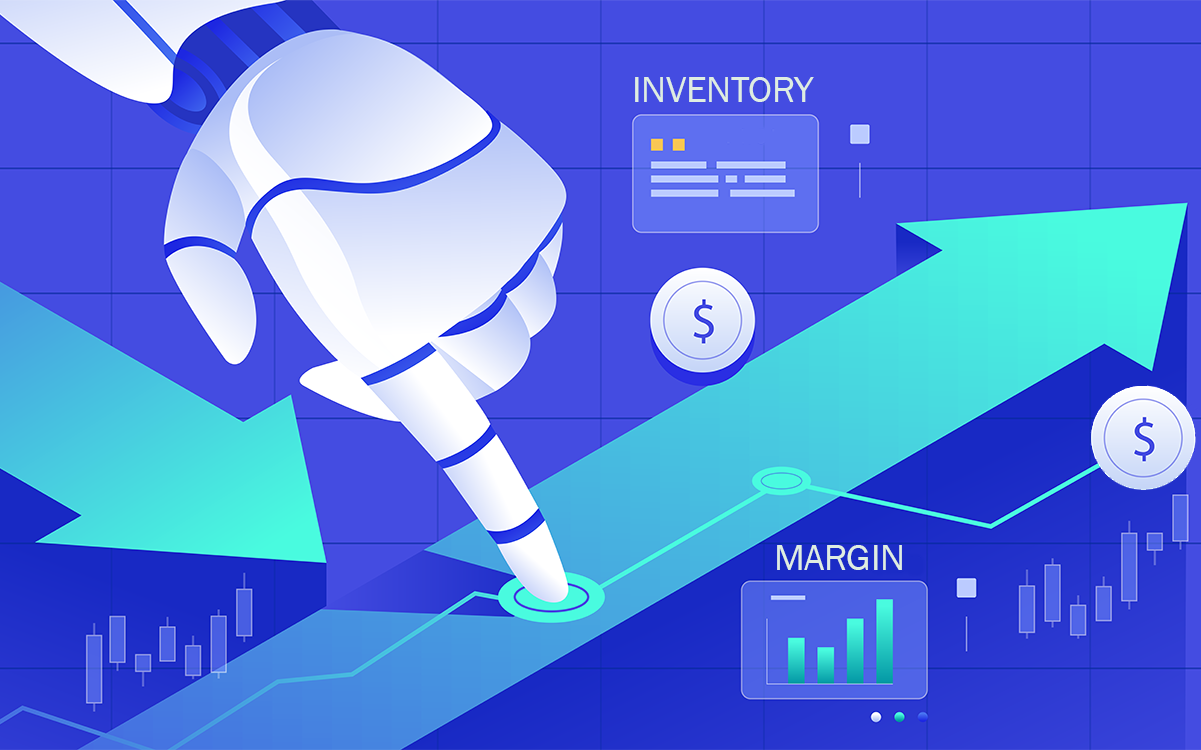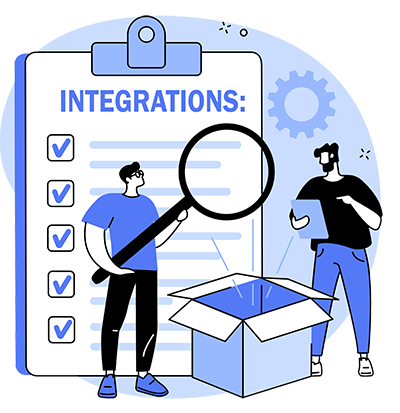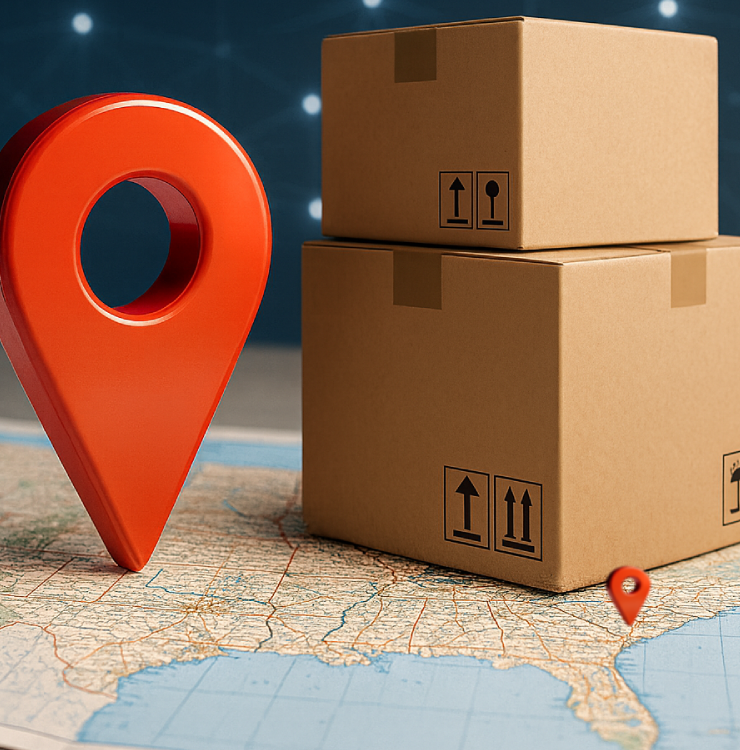
Ecommerce automation has become essential for brands expanding into D2C.
While direct-to-consumer selling isn’t new, the operational complexity it creates is. Orders come in from multiple channels. Inventory is spread across warehouses, 3PLs, and retail locations. Teams are stuck managing it all manually – with spreadsheets, siloed systems, and constant firefighting.
That’s not scalable. It’s not profitable. And it’s slowing your growth.
The solution? Ecommerce automation that’s built for modern D2C fulfillment.
Ecommerce Automation: The New Competitive Edge in D2C
Fulfillment drives ecommerce.
Multiple surveys prove that fulfillment speed and accuracy are key drivers behind online purchases. When surveyed, 74% of ecommerce shoppers consider free shipping the most important factor in making a purchase online. And while next-day delivery still has its appeal, most consumers are fine with waiting 1–2 days for their order, as long as it’s shipped free.
Ecommerce automation turns fulfillment from a cost center into a growth driver
But the fulfillment experience goes far beyond just delivering the product. It’s a driver of the customer’s total brand experience. Some 98% of ecommerce consumers say delivery drives brand loyalty, and 84% say they won’t buy from the brand again after a single poor experience.

So fulfillment doesn’t just move boxes – it drives sales and builds or breaks brand loyalty. But building that loyalty is expensive. Research shows ecommerce fulfillment costs can range from 15% to a staggering 70% of delivered product cost, depending on your average order volume and product type.
With so much at stake, it makes sense to explore strategies that reduce cost while improving the customer experience.
Ecommerce automation does exactly that.
That’s because human error causes 62% of fulfillment and inventory issues. People fulfilling orders make mistakes, and your customers and your bottom line pay for them. But automation isn’t about replacing people – it’s about eliminating the repetitive, error-prone work that slows teams down and costs money. Studies show ecommerce automation can boost productivity by up to 50% while cutting error rates by 20–30%.
Those are savings that can drop right to your bottom line.
This guide walks you through how automation can transform every part of your ecommerce operation – from order intake to final delivery.
What is Ecommerce Automation?
The concept of “ecommerce automation” gets tossed around a lot. But in ecommerce operations, it has a clear, measurable definition:
- Orders flow without manual routing
- Inventory syncs across channels and stocking locations in real time
- Shipping costs drop when decisions are optimized for cost and speed
- Warehouse productivity increases as tools amplify worker pick and pack efficiency
Ecommerce automation isn't about increasing the number of robots roaming your warehouses. Ecommerce automation is about building a connected engine that handles fulfillment complexity at scale. If you’re still editing orders by hand, emailing tracking info, or reconciling inventory in spreadsheets, you’ve got margin to win – and a customer experience to fix.
The Benefits of Ecommerce Automation
When done right, automation delivers measurable advantages across every part of your operation:
- Faster fulfillment – Orders are routed, packed, and shipped without delay or manual errors.
- Lower costs – Labor hours drop, shipping is optimized, and inventory carrying costs are reduced.
- Fewer mistakes – Automating repetitive tasks removes human error and improves accuracy.
- No data silos – Automation eliminates data silos, outmoded workflows, and spreadsheet-driven data transfer.
- Better customer experience – Accurate orders, fast shipping, and proactive updates build loyalty.
- Enhanced scalability – You can grow volume, add channels, and expand fulfillment nodes – future proofing your ecommerce business.
- Improved Sustainability – Shorter delivery distances and more efficient, automated package routing mean less carbon emissions. One Etail customer reduced their carbon emissions by 35% through automating ideal inventory placement.
In short: ecommerce automation lets D2C brands grow faster, operate leaner, and deliver a better brand experience – at scale.
Automating Ecommerce Orders: Distributed Order Management
As your D2C ecommerce business grows, the challenge isn’t order volume – it’s order orchestration.
As we’ve seen, customers expect free, 1–2 day delivery as the default. Meeting that expectation – without eating into your margins – means stocking inventory at multiple locations, closer to customers to cut delivery time and expense. Then you can route each order to the lowest-cost, fastest-delivery fulfillment option that meets customer and channel delivery expectations. That’s not something your team can manage manually at scale.
That’s where Distributed Order Management (DOM) comes in. It’s the engine behind intelligent, automated order management decisions across your entire network.
Here’s what a modern DOM system does:
Dynamic Order Routing: Routes orders to the best location – warehouse, store, 3PL, or other fulfillment partner – based on inventory, proximity to the customer, cost, and service-level expectations.
Rule-Based Prioritization: Handles complex logic for partial shipments, backorders, or channel-specific rules.
Real-Time Order Visibility: Syncs order status in real time with other internal systems such as ERP, WMS, and customer support systems, and external systems including marketplaces or 3PL partners.
This isn’t just automation – it’s order orchestration at scale. Distributed Order Management software replaces manual decisions with smart, margin-aware logic. Its logic is designed to meet customer and channel expectations while still earning the most margin possible from each order.
Ecommerce Inventory Automation: Smarter, Distributed, Always in Sync
Inventory isn’t just a cost center – it’s the engine behind ecommerce fulfillment and profitability.
Too little inventory in the right place? You’ll end up shipping late or cancelling orders, paying for expedited delivery or – worst case scenario – overselling and facing the potential for marketplace penalties.
Too much inventory in the wrong place? That ties up working capital; can lead to aging, obsolete stock; and reduces cash flow, inventory ROI and inventory yield.
Real-time, automated inventory management cuts costs, speeds fulfillment, and protects profitability.
Distributed Inventory Management (DIM) tracks, syncs, and optimizes inventory across your entire network: warehouses, 3PLs, stores, and even wholesale distributors fulfilling D2C orders for the brands they serve. The goal isn’t just inventory visibility – it’s pinpoint accuracy and control.
Here’s what an automated DIM system looks like in action:
Real-Time Inventory Visibility: Stock levels update in real time across all locations and sales channels, adjusting available-to-sell and available-to-promise levels for each channel to prevent overselling and stockouts.
Automated Inventory Replenishment: Reorder points trigger automatically based on SKU velocity, seasonality, lead time, and safety stock per location.
Data Driven Stock Levels: Inventory-aware decisions tools factor in real-time availability against future inventory requirements to avoid stockouts and late shipments.
By Location Dynamic Forecasting: Forecasting tools spot demand trends and rebalance regional inventory proactively. Rules-based logic keeps high-volume SKUs closer to major delivery zones, reducing delivery time and cost.
Early Warning of Potential Problems: Exception reports flag anomalies to catch stale, phantom, or misaligned stock or sudden demand spikes at specific locations.
Automated ecommerce inventory management software helps you carry less overall inventory, fulfill faster, and respond to real demand, without tying up working capital.
Ecommerce Shipping Automation: Optimize Speed Without Bleeding Margin
Shipping eats up more than 80% of fulfillment costs. If you’re not optimizing it with automation, you’re losing margin on every package you ship.
Smart shipping automation isn’t just about printing labels – it’s about making real-time decisions that balance cost, speed, and customer expectations.

Key tactics include:
Rate Shopping: Automatically compares live rates across carriers and service levels to pick the lowest-cost option that still hits your delivery promise. No manual lookup. No overpaying for 2-day air when ground would do.
Cartonization Logic: Cartonization tools calculate the ideal box size and configuration for each order to reduce dimensional weight charges and minimize void fill. Smarter systems, like Etail’s, even look at splitting shipments into multiple, smaller packages to take advantage of carrier rates and DIM preferences. The result is big cost savings, especially at scale.
Label Generation and Batching: Automatically prints shipping labels, packing slips, and inserts – organized by warehouse zone, carrier, or priority level to streamline pick-pack workflows for shipping and carrier scheduling.
Carrier Tracking and Auto-Updates: Sends carrier tracking info back to your ecommerce platform and marketplaces without manual entry.
Delivery Exception Monitoring: Flags late, lost, or stalled shipments automatically, so your team can resolve issues before the customer even asks.
If you’re still choosing carriers manually or handling shipments one by one, you’re not just wasting time – you’re losing money.
Warehouse Automation: Streamline the Pick-Pack-Ship Process
This is where automation hits the floor. Literally.
In the warehouse, every extra touch, mis-pick, or delay cuts into margin. While warehouse robotics gets all the headlines, ecommerce automation offers a simpler, straightforward, and less risky approach.
The key is to leverage automation to create efficient, scalable workflows that also minimize the chances for human error.
Here’s what smart warehouse automation looks like:
Optimized Picking Logic: Pick lists are generated automatically and organized by location, order priority, or batch. This minimizes picker travel time in the warehouse and ensures high-volume orders get out the door first.
Barcode Scanning Workflows: Every step – picking, packing, confirming – is tied to a scan. This eliminates mis-picks, improves traceability, and helps train new staff faster.
Mobile WMS Tools: Staff use handheld devices to receive, move, count, and replenish inventory without going back to a desktop terminal. This tightens cycle times and reduces lag.
Cycle Counting Prompts: Instead of waiting for painful year-end counts, the system prompts incremental, rolling cycle counts based on activity, helping keep inventory data clean without disruption.
Performance Dashboards: Track picker speed, error rates, and throughput by zone or shift in real time. Identify bottlenecks and rebalance labor dynamically.
Whether you run your own DCs or rely on 3PL partners, warehouse automation ensures orders don’t just get out – they get out right, fast, and for the lowest cost possible.
Choosing the Right System to Anchor Your Automation Strategy
“Ecommerce automation” isn’t a product – it’s a strategy. The products and platforms that enable that strategy come under many names: Warehouse management systems. Order and inventory management systems. Supply chain management systems. And many more.
So what type of product – and platform capabilities – should you be looking for to anchor your ecommerce automation strategy?
We’ve worked on hundreds of ecommerce automation products over the last 15 years and found four tactics that drive successful automation projects:
- Focus on integration capabilities
- Take an ecosystem approach
- Distributed inventory drives success
- Plan for scale
System Integration: Connect Everything – or Automate Nothing

The reason people are still managing orders and inventory with Excel isn’t a love of spreadsheets – it’s the fact that their systems don’t play nicely together.
Disconnected systems are the silent killer of automation.
The one constant in ecommerce is change. Your business grows. Customers send data in ways that suit them – not in ways that work best with your system. New partnerships create new opportunities, but it seems every sales channel, 3PL or content tool has its own data requirements. And while you're committed to building your ideal ecommerce tech stack, the rest of your organization relies on legacy ERPs, CRMs, and other systems of record that were never designed for the rigors of D2C ecommerce, but can’t be replaced or bypassed.
The Etail D2C fulfillment platform is designed to be system agnostic. Built around a powerful integration engine, the Etail platform is designed to work with the systems you and your partners already have in place. That means faster, risk-free ecommerce integrations and implementation without the need to rip-and-replace current systems. Plus, you get the flexibility to easily add or replace systems, partners or channels as your needs change.
Etail sits at the center of your ecommerce ecosystem, not on top of it. We don’t ask you to replace your systems – we make them work better together. Whether you need to plug in new channels, test a different 3PL, or shift fulfillment logic, Etail’s modular platform adapts without disruption. That flexibility is what makes it a long-term fit for fast-moving brands
Take an Ecosystem Approach: Make Your Platform Your Control Tower
Successful automation doesn’t come from stringing together disconnected tools – it comes from building around a tightly integrated core platform that anchors your entire ecommerce ecosystem.
You need a comprehensive toolset that spans the full operational lifecycle:
- Product content and availability across every sales channel
- Centralized order management and intelligent routing
- Real-time inventory visibility across locations and systems
- Fulfillment coordination with 3PLs, warehouses, and internal teams
- End-to-end data analytics to monitor performance and uncover bottlenecks
This “ecommerce control tower” approach gives operations leaders a single source of truth—and the ability to act on it. Without it, you’re left chasing fragments: one view in your ERP, another in your shipping system, a third in your 3PL portal. That fragmentation slows decisions and blocks automation.
Etail gives brands a unified operating system for ecommerce fulfillment. From product content syndication to real-time order orchestration, distributed inventory visibility, and channel-level ecommerce analytics and reporting – Etail brings your ecosystem under one roof. You get full control of your operations, not just snapshots. The result? Faster decisions, cleaner execution, and automation that actually scales.
Distributed Inventory: The Backbone of Scalable Fulfillment
Inventory drives ecommerce. If you don’t have the right product in the right place at the right time, you can’t profitably fulfill orders. It doesn’t matter how good your marketing is, how sophisticated your tech stack is, or how many channels you sell through – without inventory where it needs to be, nothing moves.
And here’s the reality: fast, low-cost delivery doesn’t happen in the warehouse – it happens across the network.
Distributed inventory – placing product closer to the customer – cuts shipping time and cost. But it also introduces massive complexity in routing logic, stock balancing, replenishment, and availability across systems. Without automation, distributed inventory becomes a liability, not an advantage.
Etail was purpose-built for distributed inventory management. The platform gives you real-time visibility across every fulfillment point – warehouse, 3PL, retail store, even wholesale distributors – and uses smart automation to route orders, rebalance inventory, and maintain availability across all channels. It turns distributed inventory from an operational headache into a strategic edge.
Plan for Scale: Future Proof Ecommerce Automation
Your current order volume isn’t the ceiling – it’s the test run.
Many automation projects fail not because they lack features, but because they’re scoped for the present, not the future. To future proof your ecommerce business, you need systems that scale as your channels expand, order volumes spike, and fulfillment networks multiply.
That means looking for:
- Proven uptime and high-performance throughput under real-world peak volumes
- Rule engines and workflow builders that adapt without developer support
- Role-based access controls and audit logs to manage operational complexity
- Real-time reporting and monitoring to track what’s working – and what’s not
Plan for peak season, not just average days. Choose platforms that get faster and smarter as you scale, not slower and more brittle.
Etail is built for scale. Originally developed to support top-tier marketplace sellers – brands in the top 0.5% of Amazon sales – Etail was engineered to handle massive complexity. Customers have routinely managed millions of SKUs, synced across dozens of channels, processing more than one million inventory adjustments per hour.
Today, legacy brands, 3PLs, and fulfillment partners use that same infrastructure to scale their own D2C operations. Whether you're shipping hundreds or hundreds of thousands of orders, Etail’s automation engine keeps up. It routes orders dynamically, executes complex logic in real time, and surfaces performance data when you need it. Brands don’t outgrow Etail – they grow with it.
The Future of Ecommerce Ops Is Smart, Not Just Fast
Customers expect fast. Finance expects lean. Your team expects sanity.
Ecommerce automation is how you deliver all three – not by adding headcount or duct-taping disconnected tools, but by building a smart, connected backend that scales with your business.
If your operations still rely on spreadsheets, manual routing, or fragile integrations, now’s the time to rethink your foundation.
Because in D2C ecommerce, your operations are the brand experience.
And the only way to deliver that experience – profitably, repeatedly, and at scale – is with automation that’s built to grow with you.
Additional resources
PLATFORM OVERVIEWS
WHITE PAPERS
Mastering Ecommerce Integration
Distributed Order Management Solutions Overview
CASE STUDIES
Evenflow: Conquering legacy system challenges, empowering online sales
BLOG POSTS
Distributed Fulfillment: A smarter, faster model for ecommerce logistics
Rethinking Ecommerce Fulfillment: Smarter options for brands
Data-Driven Ecommerce Fulfillment: The hidden advantage most brands overlook
Optimize Fulfillment with Distributed Order Management: Cut shipping costs and improve delivery speed with DOM
Simplify Multi-Location Ecommerce Fulfillment: How to streamline ecommerce fulfillment operations and costs
INFOGRAPHICS
What is an Ecommerce Control Tower?
Six Tools to Maximize Ecommerce Margins
VIDEOS
Distributed Order Management (DOM): Part of the Distributed Logistics for Digital Commerce video series




